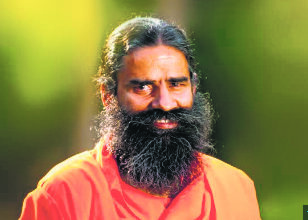In Indian mythology mothers are kept in the highest regard, they are understood as women who show colossal strength, displaying anomalous love and courage in the worst and best situations. Mothers are not only seen as a sign of divinity but also worshipped in countless forms and by countless names in various parts of India through the concept of Mother Goddess; the personification of Nature, Fertility, Destruction, Motherhood, Creation and the Bountiful. Kunti, Sita, Satyavati, Shakuntala and Karna, all of these have one thing in common which is they all were adopted. Sita, found by king Janak and Sunaina in a field, refuting the common notion by showing naturalness means nothing in motherhood. The celibate Rishi Kanva adopts an abandoned girl and names her Shakuntala, a charioteer Adirath and his wife Radha adopt Karna, little knowing his royal status and raise him as their own and prosper extraordinarily due to him, remaining their favourite and the most devoted out of their other children and even when his royal status comes to light, Karna refuses to consider Kunti as his mother and refuses to abandon his parents. Long story short, it does not matter who was born to whom, those who nurture, love, care and safeguard the child are the only well-wisher.
Adoption has always been a challenge in India and everywhere else, due to procedural as well as emotional reasons. The procedure, if not conducive to the object to be achieved can discourage people to act. One such obstacle is created due to the discriminatory and arbitrary treatment of biological and adoptive mothers. As per the repealed Maternity Benefit Act of 1961, though still in force, a legally competent adoptive mother be given a maternity leave for only 12 weeks if they would adopt a child who, at the time of adoption is less than 3 months, whereas if a woman has a child biologically, gets 26 weeks of the same leave.
Before the Maternity Benefit Amendment Act of 2017 rights of surrogate mothers were not recognized. With effect from 1st April 2017, a surrogate mother can avail of the paid maternity benefit for 12 weeks only. Due to such discriminatory and arbitrary statutory provisions detailing the maternity leave for competent adoptive mothers who take on parenting of an orphaned, abandoned or surrendered child above the age of three months, eligible parents would prefer adopting newborns and infants instead.
In addition, lately, significant changes are affected by the Ministry of Labour and Employment through the Code of Social Security, 2020. The Code has been passed by both the Houses of Parliament and received President’s assent on September 28, 2022. It has been enacted to consolidate the laws relating to social security including the Maternity Benefit Act, 1961. However, the Code does not address the discriminatory treatment of the adoptive and biological mother.
Pursuant to which a Public Interest Litigation (PIL) petition in Hamsaanandini Nanduri V. Union of India (Writ Petition(s)(Civil) No(s). 960/2021) has been filed in the Supreme court challenging the constitutional validity of Section 5(4) of the Maternity Benefits Act, 1961 which lays down that adoptive mothers would only be eligible for maternity leave if the child adopted by them is less than 3 months of age when adopted.
In the petition, it is also said that this section does not take into consideration the whole procedure of adoption under the Juvenile Justice Act (Care and Protection of Children), 2015 and the Adoption Regulations, 2017. As the law states that any orphaned, surrendered or abandoned child needs to be marked ‘Legally Free for Adoption’ mandatorily by Child Welfare Committee under the Juvenile Justice Act, 2015 to continue with the adoption. Along with that, it is not deliberated that this declaration of the child being free for adoption would be made in under 3 months, making this whole process extremely lengthy and toll taking on both the child and the mother, also making it impossible for mothers to avail the maternity leave. This also creates a huge problem for mothers who wish to adopt older children or adolescents, thus being discriminatory and creating a distinction between adoptive and biological mothers.
Every country has an international obligation towards children under the age of 18, as observed by the United Nations Convention on the Rights of the Child, reflecting, that there should be no discrimination of any form, provision of care and protection for the welfare of the child and also the provision of a wholesome environment for the hearty growth and development of the child. The petition states that the provision is incompatible with the international obligation as well as it violates Article 19 (1) (g) of the Constitution of India since it violates the adoptive mother’s freedom to carry on her trade, occupation and business by making it conditional on the age of the child. The plea was listed before the bench of Justice Abdul Nazeer and Justice Krishna Murari on 1st October 2021, in the Supreme Court.
The Supreme Court sought the response of the Central government on the plea. A response from the government is awaited.
There is still a lot of stigma around the adoption of older kids, everyone wants a newborn, or preferably, a perfectly healthy newborn. Adoption of perfectly healthy older kids is still a very big issue, let alone the adoption of special needs kids. Everyone deserves love, care and the warmth of having caretakers in one’s life. A child needs a family, always does. Every child deserves to remain innocent and safe and those children, growing up in orphanages sometimes in a good environment and sometimes in worse, all deserve people who could spoil them rotten and give them the life and education to become capable and independent
There is still a lot of work to do to sensitize and make people aware of the plight of kids who are not chosen, sometimes due to fate and sometimes due to some condition and they keep on growing up without proper treatment and therapies. Recent judgements show that we might have taken a step in the right direction and would get there eventually. From legalizing same-sex relations to this. Let us hope we learn more and more about the concept of acceptance and become more and more enlightened of our rights and duties. Let us hope that in the coming years, just as we have achieved a leap in the sex ratio, we would also achieve a rise in the number of adoptions of all children, regardless of any conditions.























